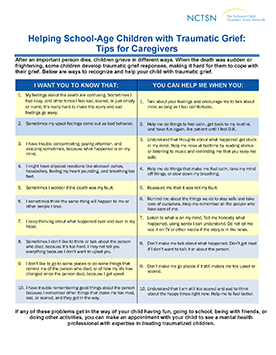
Helping School-Age Children with Traumatic Grief: Tips for Caregivers
Describes how school-age children may feel when struggling with the death of someone close and offers tips on what caregivers can do to help.
All NCTSN resources on Terrorism and Violence are available here.

Describes how school-age children may feel when struggling with the death of someone close and offers tips on what caregivers can do to help.
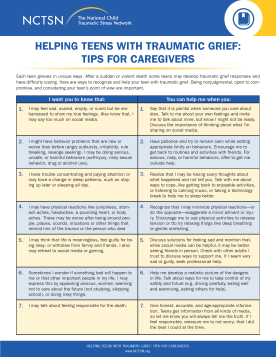
Describes how teens may feel when struggling with the death of someone close and offers tips on what caregivers can do to help.
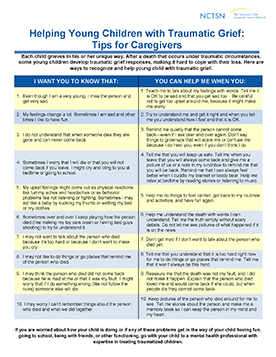
Outlines the feelings of young children struggling with the death of someone meaningful and offers suggestions on what caregivers can do to help.

Is a handout from Psychological First Aid for Schools (PFA-S) Field Operations Guide. This handouts includes information for providers on stress reactions they may experience when providing support in the immediate aftermath of a crisis and ideas for self-care.
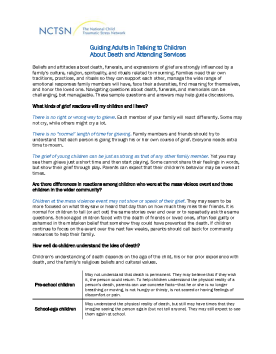
Provides ways to navigate questions about death, funerals, and memorials for children. This fact sheet discusses this challenging, but manageable, task and includes sample questions and answers to help guide discussions.
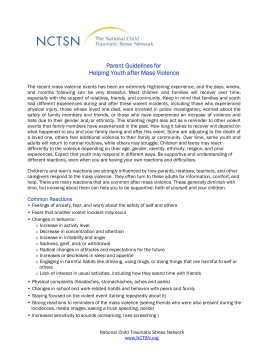
Describes common reactions to mass violence and provides tips for parents on how to care for themselves and their child. Updated March 2021.
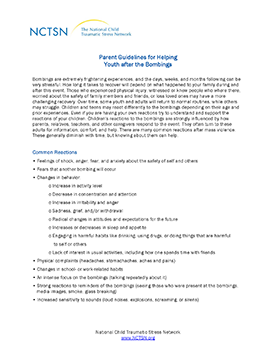
Offers parents guidance on helping their children after a bombing. This fact sheet describes common reactions children may have, how parents can help them, and self-care tips after an event.
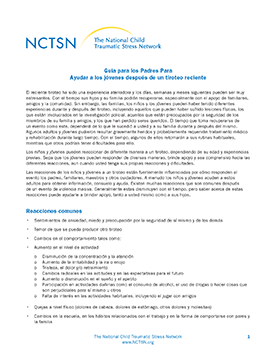
Offers parents guidance on helping their children after a mass violence event. This fact sheet describes common reactions children may have, how you can help them, and taking care of yourself after an event.
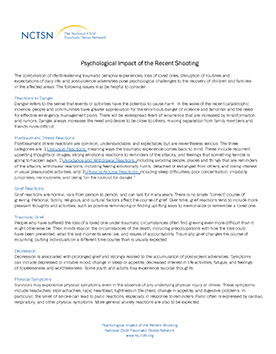
Provides parents and providers with information about the psychological impact of a shooting.
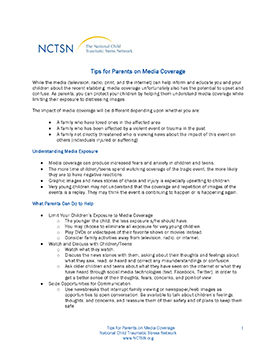
Gives information to parents and caregivers about media coverage following a stabbing. This tip sheet describes what parents can do to help their children, media exposure after events, and talks about what it is like when a family is a part of the story.

Provides information about how to talk to children about mass violence. This tip sheet describes ways to talk to children about mass violence, including how to start the conversation, how to deal with incorrect information, limiting media exposure, common reactions, and when to seek help.
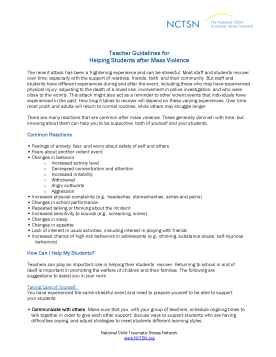
Offers teachers guidance on helping students after a mass violence event. This fact sheet describes common reactions students may have, how teachers and school staff can help, as well as engage in self-care after a mass violence event.